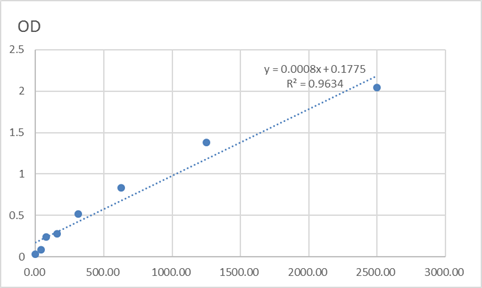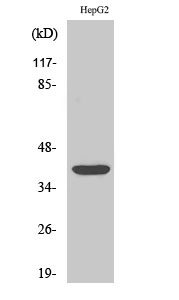Total PU.1 Cell-Based Colorimetric ELISA Kit
- Catalog No.:KA3554C
- Applications:ELISA
- Reactivity:Human;Mouse;Rat
- Gene Name:
- SPI1
- Human Gene Id:
- 6688
- Human Swiss Prot No:
- P17947
- Mouse Swiss Prot No:
- P17433
- Rat Swiss Prot No:
- Q6BDS1
- Storage Stability:
- 2-8°C/6 months
- Other Name:
- Transcription factor PU.1 (31 kDa-transforming protein)
- Detection Method:
- Colorimetric
- Background:
- function:Binds to the PU-box, a purine-rich DNA sequence (5'-GAGGAA-3') that can act as a lymphoid-specific enhancer. This protein is a transcriptional activator that may be specifically involved in the differentiation or activation of macrophages or B-cells. Also binds RNA and may modulate pre-mRNA splicing.,induction:Highly expressed in both FV-P and FV-A-induced erythro-leukemia cell lines that have undergone rearrangements of the Spi-1 gene due to the insertion of SFFV.,similarity:Belongs to the ETS family.,similarity:Contains 1 ETS DNA-binding domain.,subunit:Binds DNA as a monomer. Interacts with RUNX1 and SPIB. Interacts with CEBPD and NONO.,
- Function:
- negative regulation of transcription from RNA polymerase II promoter, transcription, regulation of transcription, DNA-dependent, regulation of transcription from RNA polymerase II promoter, negative regulation of biosynthetic process,positive regulation of biosynthetic process, positive regulation of macromolecule biosynthetic process, negative regulation of macromolecule biosynthetic process, positive regulation of macromolecule metabolic process, negative regulation of macromolecule metabolic process, positive regulation of gene expression, negative regulation of gene expression, negative regulation of transcription, negative regulation of cellular biosynthetic process, positive regulation of cellular biosynthetic process, regulation of gene-specific transcription, regulation of homeostatic process,positive regulation of gene-specific transcription, regulation of transcription, regulat
- Subcellular Location:
- Nucleus .
- June 19-2018
- WESTERN IMMUNOBLOTTING PROTOCOL
- June 19-2018
- IMMUNOHISTOCHEMISTRY-PARAFFIN PROTOCOL
- June 19-2018
- IMMUNOFLUORESCENCE PROTOCOL
- September 08-2020
- FLOW-CYTOMEYRT-PROTOCOL
- May 20-2022
- Cell-Based ELISA│解您多样本WB检测之困扰
- July 13-2018
- CELL-BASED-ELISA-PROTOCOL-FOR-ACETYL-PROTEIN
- July 13-2018
- CELL-BASED-ELISA-PROTOCOL-FOR-PHOSPHO-PROTEIN
- July 13-2018
- Antibody-FAQs



